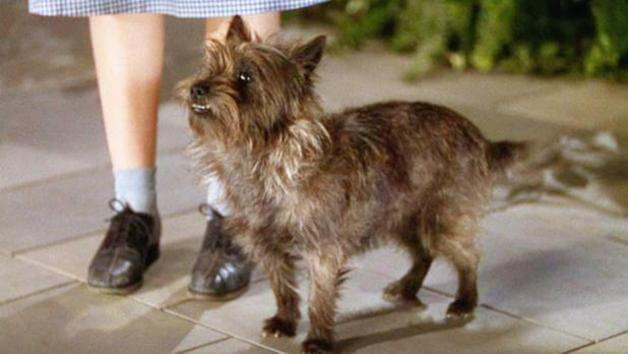Airedale Terrier Dog Breed | Description, Temperament, Lifespan, & Facts
The Airedale Terrier, often referred to as the “King of Terriers,” is a versatile and intelligent breed known for its remarkable hunting skills, loyalty, and distinctive appearance. Originating from the Aire Valley in Yorkshire, England, this breed was initially developed in the 19th century for hunting otters and rats in the region between the Aire and Wharfe Rivers.
Today, the Airedale is celebrated not only as a hunting dog but also as a loving family companion and a diligent working dog.
Contents
- 1 Physical Description of the Airedale Terrier
- 2 Temperament and Behavior of Airedale Terriers
- 3 Friendliness of Airedale Terriers
- 4 Training and Exercise Needs of Airedale Terriers
- 5 Health and Lifespan of Airedale Terriers
- 6 Diet and Nutrition for Airedale Terriers
- 7 Grooming and Maintenance of Airedale Terriers
- 8 Living Conditions and Suitability
- 9 Fun Facts About Airedale Terriers
Physical Description of the Airedale Terrier

Appearance and Size
Airedale Terriers are the largest of the terrier dog breeds, standing about 21 to 23 inches tall at the shoulder and weighing between 50 to 70 pounds. Their athletic build and sturdy frame are complemented by a regal and alert expression.
Coat and Color
The Airedale sports a dense, wiry coat that is both water-resistant and low-shedding. This double coat is typically tan with a distinctive black saddle and, occasionally, some grizzle markings. Regular grooming is essential to maintain the coat’s texture and appearance.
Temperament and Behavior of Airedale Terriers

General Temperament
Airedales are known for their lively and outgoing personalities. They are intelligent, independent, and can be quite the jokers, often entertaining their owners with playful antics. Their high energy levels and curiosity make them excellent companions for active families.
Are Airedale Terriers Aggressive?
While Airedales are protective of their families and can be wary of strangers, they are not inherently aggressive. Early socialization and consistent training ensure they grow into well-mannered adults. They are known to have a strong prey drive, so supervision around smaller animals is advised.
Common Behavior Problems
Airedales can exhibit some behavioral challenges, such as stubbornness and a tendency to dig or chew when bored. They may also be vocal, barking to alert their owners of anything unusual. Providing ample mental and physical stimulation can help mitigate these issues.
How to Manage and Correct Behavioral Issues
Addressing behavioral problems in Airedales involves consistent training, positive reinforcement, and ensuring they have plenty of exercise and mental challenges. Enrolling in obedience classes and providing puzzle toys can be beneficial.
Friendliness of Airedale Terriers
Are Airedale Terriers Friendly?
Airedales are generally friendly and affectionate with their families. They form strong bonds with their owners and are known for their loyalty.
Interaction with Children
These dogs are typically good with children, especially when raised with them. Their playful nature makes them excellent playmates, though supervision is recommended to prevent any accidental roughhousing.
Interaction with Other Pets
Airedales can get along well with other dogs, particularly if they are socialized from a young age. However, due to their hunting background, they may have a tendency to chase smaller animals.
Training and Exercise Needs of Airedale Terriers
Training Tips and Techniques
Training an Airedale requires patience and consistency. Positive reinforcement methods work best, as these dogs respond well to praise and rewards. Early socialization is crucial to prevent any behavioral issues.
Exercise Requirements
Airedales are high-energy dogs that require regular exercise to stay healthy and happy. Daily walks, playtime in a secure yard, and opportunities to run are essential. They also excel in various dog sports, such as agility and obedience.
Mental Stimulation and Activities
In addition to physical exercise, Airedales need mental stimulation. Providing puzzle toys, engaging in interactive play, and teaching new tricks can help keep their minds sharp and prevent boredom.
Health and Lifespan of Airedale Terriers
Common Health Issues
Airedales are generally healthy, but like all breeds, they are prone to certain health conditions. These may include hip dysplasia, allergies, and hypothyroidism. Regular veterinary check-ups are important to catch and treat any issues early.
Preventative Care and Regular Check-ups
Routine veterinary care, including vaccinations, dental cleanings, and parasite prevention, is essential to keep your Airedale in good health. Regular check-ups can help identify and address potential health problems before they become serious.
Expected Lifespan
Airedales typically live between 10 to 13 years. Providing a balanced diet, regular exercise, and proper veterinary care can help ensure a long and healthy life.
Diet and Nutrition for Airedale Terriers
Recommended Diet
Airedales thrive on a high-quality, balanced diet that meets their nutritional needs. Consult your veterinarian for recommendations on the best food for your dog’s age, size, and activity level.
Feeding Tips
Divide the daily food intake into two meals to prevent overeating and reduce the risk of bloat. Ensure your Airedale has access to fresh water at all times.
Foods to Avoid
Avoid feeding your Airedale foods that are toxic to dogs, such as chocolate, grapes, raisins, onions, and garlic. Also, be cautious with fatty and processed foods that can lead to obesity and other health issues.
Grooming and Maintenance of Airedale Terriers
Grooming Routine
Regular grooming is essential to keep an Airedale’s coat in good condition. Brushing at least twice a week helps prevent matting and removes loose hair.
Coat Care
Hand-stripping the coat twice a year is recommended to maintain its texture. Alternatively, professional grooming can help keep your Airedale looking its best every few months.
Nail Trimming and Ear Cleaning
Regular nail trimming and ear cleaning are important parts of an Airedale’s grooming routine. Check and clean their ears weekly to prevent infections and trim their nails as needed to prevent overgrowth.
Living Conditions and Suitability
Ideal Living Environments
Airedales adapt well to various living environments but thrive in homes with access to a yard where they can run and play. They are not suited to apartment living unless their exercise needs are met.
Indoor vs. Outdoor Living
While Airedales enjoy spending time outdoors, they should live indoors with their families. They are social dogs that crave companionship and should not be left alone for long periods.
Suitable for Families and Singles
Airedales make excellent pets for families with children, active singles, or couples. Their versatile nature allows them to fit well into different types of households.
Fun Facts About Airedale Terriers
Unique Characteristics
Airedales are known for their distinctive appearance and spirited personality. They are often described as “clowns” for their playful behavior and sense of humor.
Famous Airedale Terriers
Several famous individuals have owned Airedales, including President Warren G. Harding, who had an Airedale named Laddie Boy. This breed has also been featured in various films and literature.
Interesting Trivia
- Airedales served as messenger and guard dogs during World War I.
- They are sometimes called the “King of Terriers” due to their size and presence.
- The breed has a remarkable sense of smell, making them excellent tracking dogs.
Conclusion
Airedale Terriers are versatile, intelligent, and loyal dogs that make excellent companions for active families and individuals. With proper training, socialization, and care, they can thrive in various living environments.
Why Choose an Airedale Terrier?
Choosing an Airedale Terrier means welcoming a fun-loving, energetic, and devoted friend into your life. Their unique blend of independence, playfulness, and loyalty makes them a cherished addition to any household. Whether you’re looking for a reliable working dog or a loving family pet, the Airedale Terrier is a breed that truly stands out.
- Golden Retriever Pros and Cons: What Every Pet Parent Should Know - 15 September 2025
- Cane Corso Dog Breed: Health, Care, and Lifespan - 14 September 2025
- Catahoula Leopard Dogs: Description, Temperament, Lifespan, & Facts - 21 July 2025







